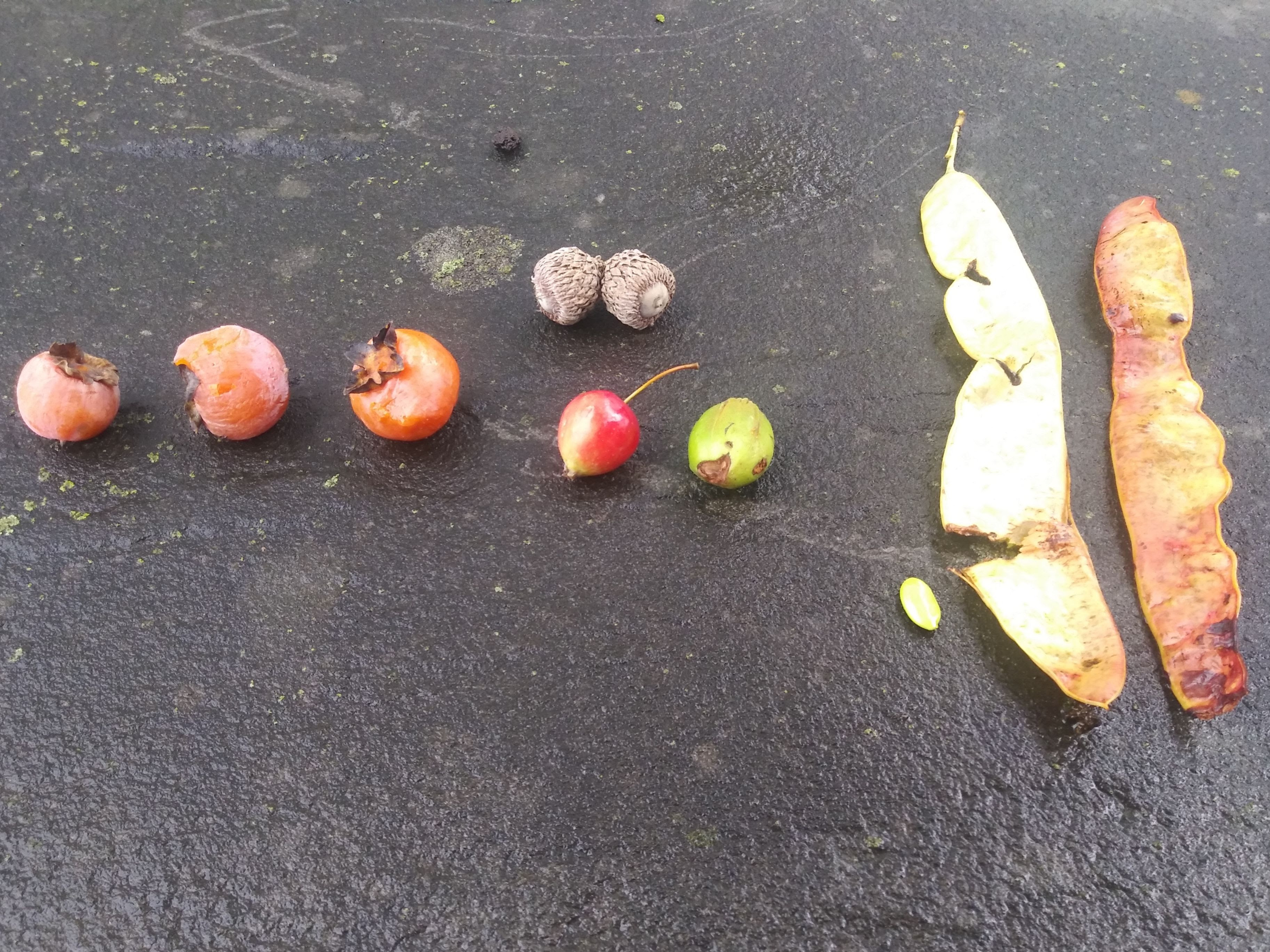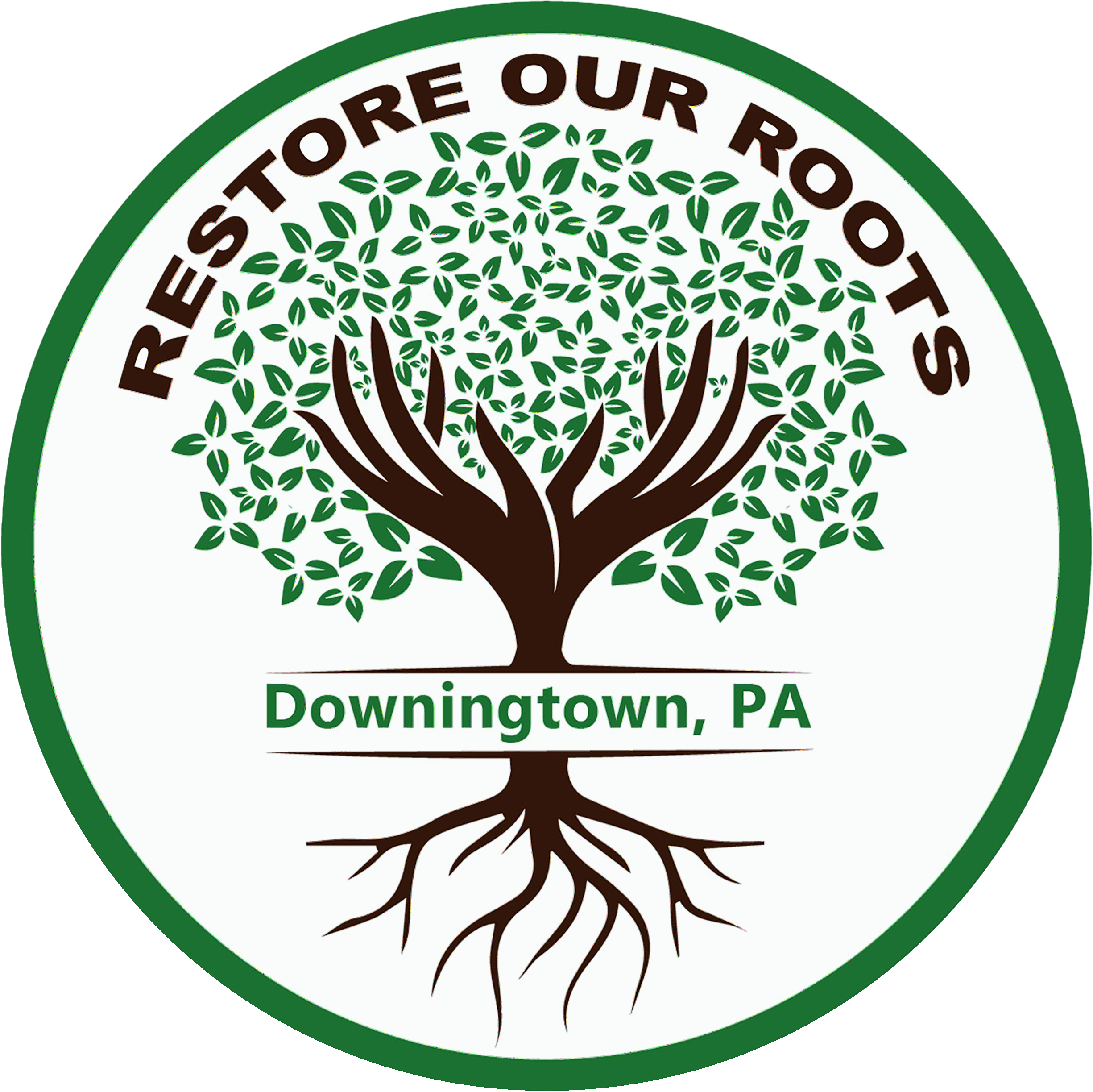The name John Hershey is commonly referenced by Restore Our Roots (ROR) when presenting the type of projects we would like to pursue in Downingtown and when speaking to interested collaborators. Understandably, this may be the first time you have heard his name; I have only learned about him in the past two years from more knowledgeable Hershey enthusiasts including Rick Webb (member of the Downingtown Tree Commission), Adrian Martinez (member of the Downingtown Planning Commission), and Dale Hendricks (co-founder of North Creek Nurseries and founder of Green Light Plants). All three have orated the long horticultural history of Hershey, the extensive work and study he has done on forageable trees and shrubs, and the uniqueness of the trees he has grown within and around Downingtown. Many great news articles online have also painted an interesting picture of John Hershey and the people he has cooperated with throughout his career. It would take many pages to tell his whole story, but I hope to express the reason as to why ROR has become interested in this man and his work and how we plan to continue some of his efforts within Downingtown and maybe even throughout Chester County.
John Hershey was a Pennsylvania native that started down the road of agroforestry by working for another important horticulturist, J.F. Jones. Hershey began to work with J.F. Jones at his tree nursery in Lancaster county at a young age. Arguably, J.F. Jones’s knowledge and passion for nut trees gave John Hershey a steady foundation for his lifelong pursuit of agroforestry and permaculture. To paint a picture of J.F. Jones’s influence, he has many informative papers deemed historically significant and archived by the Department of Agriculture, and J.F. Jones is referenced in many nut tree study papers on his work of commercial tree nut production and hybridizing different nut tree species. Eventually, John Hershey had the confidence in starting his own tree nursery in Downingtown, PA in 1921. It was an eight-acre parcel now the location of the Downingtown United Methodist Church, the Downingtown Academy Learning Center, and various apartment complexes. All of them have preserved some of his trees and are gracious hosts for those interested in visiting them. Hershey lived across the road in a house, still standing, on the Downingtown Friends Meetinghouse property.
Hershey added environmentalism to his horticulture passion when the devastating Dust Bowl event took place in the 1930s. He decided to write pamphlets and opinion pieces in local newspapers advocating for better soil conservation and the usage of permanent plants and trees to anchor the soil in place. His ideas and passion caught the attention of another influential partner in Hershey’s professional life, Professor J. Russell Smith of Wharton School of UPenn. Professor Smith was a known professional and was also interested in improving agricultural techniques to make farming more productive, but environmentally aware. He found a place for Hershey to carry out his work through the Tennessee Valley Association (TVA) and was able to get Hershey to start and lead his own division at the authority through the help of FDR’s Green New Deal.
While at TVA, Hershey, and Smith had a productive and collaborative four years. They set out to create an appealing system of permaculture for farmers nationwide. Hershey looked for the best tree species to cultivate and graft to make the change from traditional farming to permaculture to be worth the risk for farmers. Through travel expeditions around the East and Southern regions of the US, research, testing, and data collecting as well as crowd-sourcing for the most productive tree seed, Hershey with the help of Smith were able to find the best nut and fruit trees to grow. Hershey would grow native US trees as a biological frame, and then he would graft genetic relative samples from the best trees collected from all over the East and South. As a thank you, he would name favored cultivars after the family that provided the sample. Unfortunately, the diagnosis of cancer cut his work at TVA short, and Hershey decided to continue his efforts back in his home state of Pennsylvania on a new 75-acre property north of Downingtown. 

Pictured above are graft lines from Hershey’s former nursery planted 100 years ago
At his new nursery site, John Hershey continued his pursuit to grow and share the best fruit and nut trees possible that provide larger yields and sweeter, tastier fruits. Some of the species still existing on properties at both nursery sites include:
- Bur Oak – Can be boiled and ground into a flour
- Hican (Hickory, Pecan hybrid) – Can be eaten raw like pecans
- Black Walnut – Can be eaten raw after some preparation
- Bitternut Hickory – Eaten raw when low on food
- American Persimmon – Can be eaten raw and cooked with
- Honey Locust – Can be eaten raw and used to sweeten
- American Chestnut – Can be eaten raw

Left to Right: American Persimmons, Burr Oak Acorn, Crab Apple, Hican, & Honey Locust Pod
While visiting both sites a few weeks ago, we met two groups of people that have travelled to appreciate and even harvest some of the fruits and nuts produced by these trees. One couple drove up from West Philadelphia with two buckets to collect the fruits and nuts to both eat as well as to cultivate new trees that can be planted. Another pair of people drove all the way from Connecticut to see these trees since they grew interested in their legacy through a network of John Hershey Tree enthusiasts that has existed for more than a decade. I was amazed at how much of a draw these trees were while many Downingtown residents would just see them as another tree plopped onto a suburban property.
Going forward, ROR has two missions when it comes to the John Hershey Trees. First is to tell the story of these trees and why they are so special. They represent more than just being a remnant of a past, passionate resident. They represent the cooperation between professional and everyday people, the gathering and passing of knowledge to the next generation, and recognizing the importance of Pennsylvania, especially this area of Pennsylvania, in promoting the movements of agroforestry, food forests, and silvopasturing.
Our second mission is to continue John Hershey’s work in spreading his trees among the landscape throughout the county, and maybe even throughout the country, in the name of environmental conservation and resource provisioning. Hershey’s mission of providing productive fruit and nut trees to farmers nestles perfectly in what ROR is looking to do in Downingtown and beyond. We seek to connect the public to nature and the local ecosystem in various, unique ways beyond the usual tactics of presentations and nature walks. One pursuit is harvesting and cooking with forageable ingredients from the many trees, shrubs, and perennials found in Pennsylvania to show everyday people the nutritional value of hosting native plants in their community and on their own property. ROR would like to become a part of the food forest movement that is slowly gaining traction throughout the country and would like to continue the production and planting of Hershey Trees in our restoration projects occurring in the borough’s parks and other common areas. This unique approach to resource conservation has already proven to be a great way to attract visitors from around the country and is a perfect way for Downingtown to embrace its horticulture past as well as set it apart from other Chester County communities to improve civic pride and cultural uniqueness. Similar to how John Hershey seeked to provide financial and resource stability to farmers, we seek to do the same for Downingtown as it develops and exists into the future.
